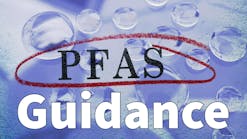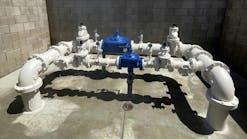Do you remember when recycling first caught on in your community? At your school or workplace? In your own home? The answer will depend somewhat on your age and where you fall within the timeline of the recycling movement: Earth Day (the first one was in 1970) helped bring widespread attention to the idea. In 1971 the first “bottle bill” was introduced in Oregon, charging a refundable deposit on beverage containers. In 1974 a few cities began curbside recycling programs; by 1988 more than a thousand cities had them, and by 1992 the number had grown to more than 5,000. In 1981 the first city—Woodbury, NJ—made recycling mandatory.
Chances are that if you grew up in the 1980s or later in the US, you were exposed to some sort of message in school regarding recycling. The idea was that if kids learned the importance of it there, they’d take the lesson home and encourage—not to say nag—their parents when they threw a can or bottle in the trash. And it worked; studies from the ’80s and ’90s, when these educational efforts really took off, showed that households with children who were exposed to these programs recycled more.
Now we’re taking the same approach with other practices, including education about watersheds. An article on page 18 of this issue looks in detail at a program in Bozeman, MT, to teach fourth-, fifth-, and sixth-graders about water conservation and stormwater management. The lessons include identifying key features of the local watershed, exploring how water flows on the campus of the kids’ own school (and how it carries pollutants with it), and looking around at home to see how water might be used more efficiently.
Importantly, the program is carefully measuring its results—comparing, for example, students’ scores on tests of watershed and conservation knowledge before and after the course. (They improved by an average of 120%.) Organizers have also tweaked the program, based on feedback from teachers and parents; for example, an exercise called the “home water audit” was renamed “home water investigation” after some parents balked at the original term.
The group that helped local educators in Bozeman, the Project WET Foundation (for “Water Education for Teachers”), develops educational material for programs all over the country and around the world, with an emphasis on programs to be delivered to schoolchildren. Similar programs exist, such as the Leaf Pack Network (featured in an article in our January/February 2010 issue), developed by the Stroud Water Research Center and focusing very specifically on stream health and stream macroinvertebrates.
Are you aware of any of these programs in your community? Have your kids participated in them? And how well do you think they work? At best, they’re introducing new concepts and getting students out of the classroom and into the environment they’re supposed to be learning about—and beyond that, they may spark a larger, lifelong interest in scientific investigation. On the downside, they take scarce time and resources that might be spent on other things. (The article in this issue addresses that as well, including the time needed to train the teachers.) Share your thoughts in the comments below, or email me at [email protected].



